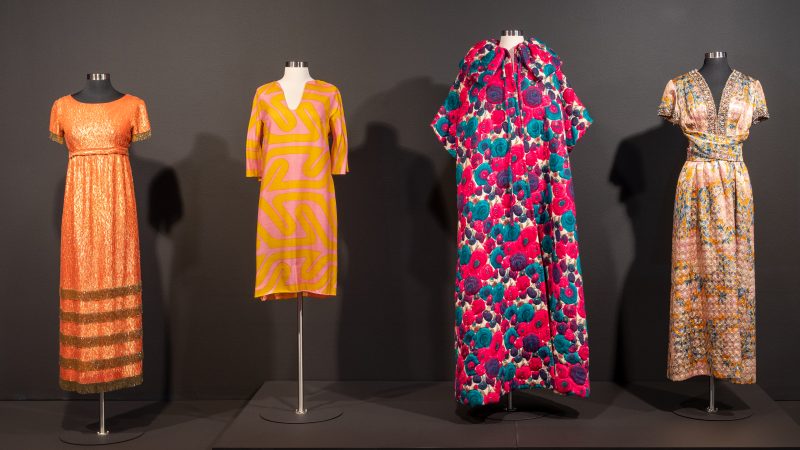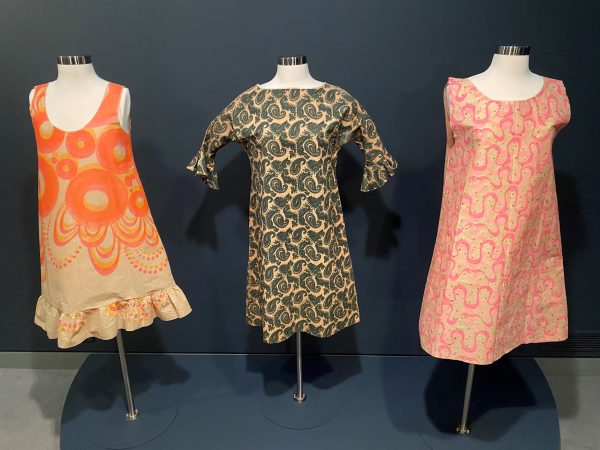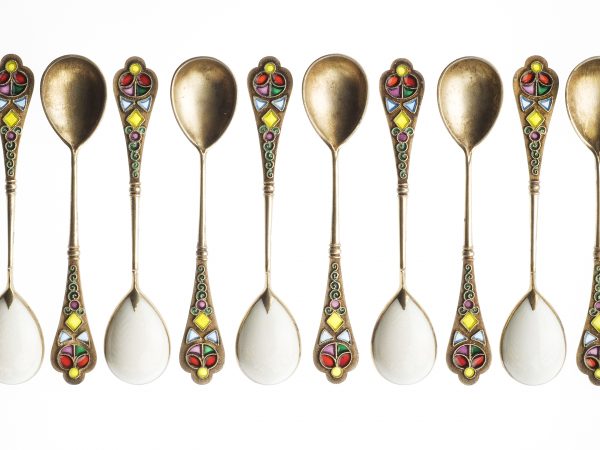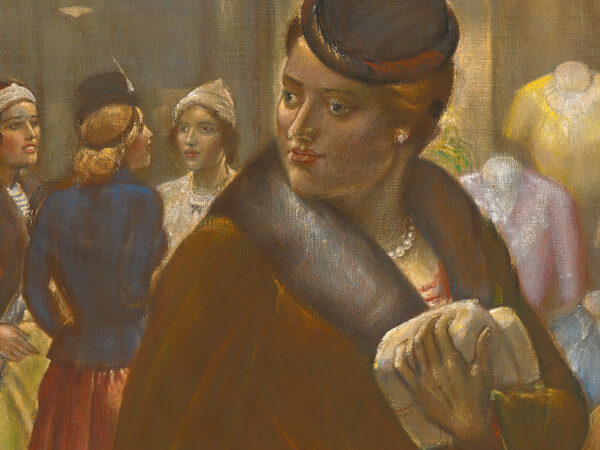
Wichita Wore What? A Century of Local Fashion
January 21 - July 30, 2023
Paul Ross Gallery
Scott and Carol Ritchie Gallery
About This Exhibition
Wichita Wore What? A Century of Local Fashion spotlights our city’s fashionable history. In 1870, Wichita officially boasted about 700 residents. By the turn of the 20th century, however, Wichita had become a major regional center offering a wide variety of shopping spots, places to see and be seen, and residents eager to assert their identities as refined citizens of the world. With nearly a dozen department stores dotting the downtown area alone, Wichitans could admire and purchase the latest styles from the East Coast and beyond. As the city continued to flourish after World War I and World War II–with the success of companies including Coleman, Metholatum, Travel Air, Beech, Stearman, and Cessna–residents continued to embrace the most up-to-date designs.
Wichita Wore What? features clothing and accessories worn in Wichita from 1888-1988, surveying changes in both apparel and lifestyle. The exhibition includes designs by superstars like Sadie Nemser, James Galanos, Geoffrey Beene, Halston, Norman Norell, Oscar de la Renta, and Bill Blass. It also features clothing worn by key figures in Wichita’s history including the city’s first female mayor, Connie Peters, and civil rights icon Chester I. Lewis.
Wichita Wore What? A Century of Local Fashion is drawn from the collections of the Wichita-Sedgwick County Historical Museum and local collectors. The exhibition is organized in conjunction with Isabelle de Borchgrave: Fashioning Art from Paper. See extraordinary paper reproductions of textiles from around the world in Isabelle de Borchgrave and enjoy an immersion in local fashion in Wichita Wore What?
Pulp Sensations

Collection of Kansas State University’s Historic Costume and Textile Museum
Included in Wichita Wore What? is a mini-exhibition, Pulp Sensations: 1960s Paper Fashion, featuring seven paper dresses–dresses made from paper!–on loan from Kansas State University’s Historic Costume and Textile Museum. This small show in the Scott and Carol Ritchie Gallery gives a glimpse into the paper dress sensation of the late 1960s, an era marked by youth culture, progress, and consumerism.
The craze for catchy trends and novelties–marketed in television programs and advertisements–found its perfect expression in disposable paper dresses, originally created as a gimmick in 1966 by Scott Paper Company. Scott Paper encouraged customers to send in proof of purchase coupons for buying paper towels and toilet paper to receive one of two dresses made from paper. However, the gimmick quickly turned into a sensation, with dozens of companies suddenly producing paper dresses.

